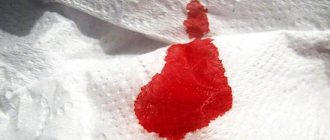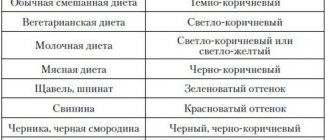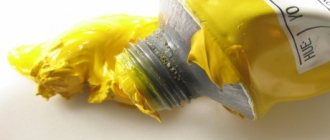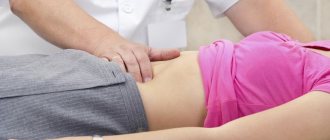Lientorrhea is the appearance of undigested food residues in the stool. This symptom occurs in diseases of the digestive tract and indicates a malabsorption in the stomach and small intestine. Lientorrhea may also be a variant of the norm. The one-time appearance of foreign impurities is not a reason for making a diagnosis. If the situation repeats, you need to see a doctor and get examined.
Causes of undigested food in stool
Non-pathological causes
Gastroenterologists warn: the appearance of undigested pieces of food in the stool is not always considered a pathology. Often, lientorrhea is associated with trivial reasons:
- Eating foods rich in indigestible fiber. This category includes vegetables and fruits, herbs, and grains. This phenomenon is often observed among vegetarians. If fiber is unable to be digested, it transits through the digestive tract and is eliminated naturally.
- Binge eating. Eating a large amount of food overloads the stomach and intestines and leads to the fact that the gastrointestinal tract cannot cope with the load. Some food is not digested and appears in the feces.
In these conditions, lientorrhea is short-term and is not accompanied by a significant disturbance in well-being. No special treatment is required. Diet correction helps to cope with the problems that have arisen and restore the functioning of the digestive tract.
Pathological causes
- Diseases of the digestive tract associated with insufficient production of gastric juice and pancreatic enzymes: gastritis with reduced secretion, pancreatitis. At the same time, the digestion of food that is easily broken down under normal conditions is disrupted.
- Diarrhea of various origins (including infectious). In this condition, food quickly passes through the intestines and does not have time to be fully processed.
- Intestinal dysbiosis. Violation of the biocenosis of the digestive tract interferes with the digestion of food and leads to lientorrhea.
- Taking certain medications. Certain groups of medications reduce enzymatic activity and interfere with normal digestion of food.
Be sure to read: Rectal spitting: causes of occurrence and methods for diagnosing pathologies
In gastrointestinal pathology, lientorrhea recurs repeatedly and is accompanied by unpleasant symptoms. The severity of the disease depends on its severity and the individual sensitivity of the body.
Undigested carrots in the stool of an adult
The appearance of undigested food debris in an adult's stool may be the result of an upset stomach, an infectious disease, or constipation.
Expert opinion
Kovaleva Elena Anatolyevna
Doctor-Laboratory Assistant. 14 years of experience in clinical diagnostic services.
But most often this is not a pathology - some types of fiber are simply not completely absorbed by the body, and this is the norm for it. In other cases, a healthy person should not experience lumps or pieces of undigested food during bowel movements.
What could be the causes of this problem?
Several types of plant-based fiber are intended for human consumption – digestible and non-digestible. Each of these species can be found in feces after defecation.
Digestible fiber . If it is observed in the stool, this indicates a lack of hydrochloric acid in the body, which is responsible for the breakdown of cells.
A low level of acidity causes pieces of fruits and vegetables to remain in the stool. Usually these are particles of carrots, potato tubers, grapes, and beets.
Accordingly, the process of assimilation of useful microelements does not occur from them. Normally there should be no digestible fiber.
Indigestible fiber . This includes grains, vegetable and fruit peels, legumes, and plant stems. Products made from indigestible fiber are not affected by gastric juice
If there is not enough hydrochloric acid in the stomach, then there will be more particles of unprocessed food than in a healthy person. Then the process of removing feces from the intestines will be accompanied by diarrhea. The only items that do not fit into this category are elements of products that are not intended for food - fruit seeds, fruit cuttings.
Food particles in stool due to dysbacteriosis
The development of pathology leads to deformation of the normal intestinal microflora - the number of pathogenic bacteria , and the number of beneficial microorganisms decreases. At the initial stage of the disease, the balance between them is disturbed more and more, but this is not yet noticeable for the body.
If the immune system is normal, the balance between bacteria will be restored naturally. When dysbiosis develops further, pathogenic bacteria predominate in the intestinal microflora.
Then there is a decrease in appetite, a feeling of unpleasant taste in the mouth, bloating, vomiting, loose stools or constipation.
Then the intestinal walls become inflamed under the influence of pathogens and cannot absorb nutrients and digest food completely.
Then its remains are observed in the feces of adults during bowel movements. If the disease is not treated, it will develop into a dangerous infection and reduce immunity.
What should be the correct treatment?
Only a specialist in this field can reliably determine the cause and make a diagnosis, so you need to consult a doctor. If undigested pieces of food appear in the stool more than once, this is a reason to undergo a course of treatment.
In a single case, you just need to take a closer look at your diet and lifestyle.
In the process of healing the body, it needs a diet that excludes from the menu foods containing coarse fiber, alcohol and carbonated water, and fatty meat.
The doctor prescribes antibiotics, antiseptic and antifungal medications.
To restore the intestinal microflora, Mezim-Forte and Creon are used. If you have loose stools with remnants of undigested food as a result of a lack of hydrochloric acid, drink Omeprazole to stop progressive gastritis.
Expert opinion
Kovaleva Elena Anatolyevna
Doctor-Laboratory Assistant. 14 years of experience in clinical diagnostic services.
If there is a rapid evacuation of undigested stomach contents, then this is a sign of inflammation due to colitis or gastroenteritis. Then hospitalization and inpatient treatment with the use of antibiotics, Regidron and Analgin are needed.
When the reason for stool with irregular consistency lies in the presence of coarse fiber products in the diet, it is enough to simply stop eating them.
What should you do if you find leftover lunch in your stool?
The digestive organs are capable of digesting certain amounts of food consumed by a person. If you eat more than the norm , the digestive system will not be able to cope with the excess food. When a stressful state is observed, the process of processing the contents of the stomach becomes more difficult.
What to do in such cases:
- try to chew it more thoroughly while eating;
- eat at frequent intervals, but in small portions;
- do not overeat;
- give dishes more aesthetics so that they look more appetizing;
- do not drink liquid while eating or immediately after it;
- You can drink water an hour and a half before meals, but no more than a glass;
- stop taking medications that the doctor did not prescribe, so as not to worsen your health condition;
- do not read during breakfast or lunch and do not watch TV, so as not to provoke the appearance of a stressful state;
- stop eating in a hurry;
- make meals separate - consume proteins only with proteins, carbohydrates - with carbohydrates.
You can try to normalize the functioning of the digestive organs using alternative medicine methods.
What is the best herb to brew?
To eliminate the symptoms of dysbiosis, diarrhea and get rid of problems with the process of digesting food , it is recommended to take herbal infusions that relieve inflammation and restore sensitive intestinal microflora.
- Eucalyptus infusion. It is effective for indigestion, constipation, metabolic disorders in the body and problems with food processing. To prepare it, three tablespoons of dried leaves are brewed with 2.5 glasses of hot water and left until cool. Drink a third of a glass before meals.
- Mint decoction. Leaves of the plant - 3 tbsp. pour 200 ml of boiling water, cover tightly and infuse. After cooling, take the drug ½ glass every 4 hours.
- Chamomile officinalis. Pour a couple of tablespoons of dry raw materials into a mug of hot water, cover with a lid and a towel. After straining, consume 70 ml during an exacerbation.
- Brew a herbal mixture of sage, chimney and chamomile at the rate of 3 tbsp. per glass of mixture. Drink instead of tea for 2 months.
Take care of your digestive system and it will function properly!
Source: https://worldwantedperfume.com/v-kale-neperevarennaja-morkov-u-vzroslogo/
Associated symptoms
Short-term lientorrhea, not associated with diseases of the digestive tract or other problems, usually remains asymptomatic. Slight heaviness in the abdomen and moderate flatulence may occur.
The following signs speak in favor of pathology:
- the appearance of a sharp and unpleasant odor of feces;
- severe bloating;
- pain around the navel and in the sides of the abdomen;
- rumbling in the stomach and flatulence;
- diarrhea;
- belching;
- heartburn;
- increase in body temperature (indicates an active inflammatory process).
If any of these symptoms appear, you should consult a doctor - a therapist or gastroenterologist.
Is this a pathology or a variant of the norm?
Each of us knows firsthand about changes in the color, smell and consistency of stool, because everyone experiences indigestion, infections, and constipation at least once in their lives. But undigested food fragments can cause real panic in some. Under normal conditions, feces do not contain any inclusions, lumps, pieces of undigested food, mucus, blood, etc. Very small white inclusions can be present in both children's and adults' feces - this is a variant of the norm. Remains of undigested food in the stool do not always indicate poor functioning of the gastrointestinal tract.
Insufficiently digested food can be a consequence of infectious diseases, constipation or indigestion. In most cases, the appearance of undigested food fragments does not mean that a person is sick. It’s just that the human gastrointestinal tract is not able to digest some foods or parts thereof. Why is this happening? To understand this, you need to know at least a little about what happens to foods as they pass through the digestive tract.
Diagnostic scheme
To determine the cause of lientorrhea, an examination is prescribed:
- Coprogram. Normally, feces should be well-formed, without a strong odor or pathological impurities. The appearance of protein, connective tissue, pus, blood, fatty acids and starch indicates the development of pathology.
- General clinical blood and urine tests. Allows to identify the inflammatory process and concomitant pathology.
- Ultrasound of the abdominal organs. It is used for an initial assessment of the situation and making a preliminary diagnosis.
- Endoscopic studies. Colonoscopy and sigmoidoscopy are used for visual assessment of the intestinal mucosa, detection of tumors, polyps and other conditions.
Based on the results of the diagnostics, the optimal treatment tactics will be selected.
Age features of the structure
In addition, a child’s gastrointestinal tract is much shorter than that of an adult and food stays in it for less time and simply does not have time to be completely digested. Pieces of food in your baby's stool may be visible to the naked eye. These can be whole vegetables, fruits, etc. And in other cases, such fragments are discovered only in laboratory conditions, during research. For example, this is how lactose deficiency is detected, in which undigested carbohydrates and lactose are found in the feces of children. The detection of whole pieces of food in a child’s stool should alert you if this is accompanied by symptoms of dyspepsia:
- loose stools;
- bloating;
- intestinal colic;
- impurities in feces (mucus, etc.).
Why there is undigested food in feces is interesting to many.
Principles of therapy
If lientorrhea associated with pathology of the digestive tract is detected, treatment is carried out by a gastroenterologist. Therapy is based on diet and medication.
Diet
General recommendations during exacerbation:
- frequent split meals - small portions 5-6 times a day;
- reducing the total calorie content of food to 2200 kcal/day;
- rational distribution of meals throughout the day (minimum in the evening);
- consumption of mechanically processed food (priority is given to pureed cereals, purees, boiled meat and fish);
- refusal of fried, spicy and salty foods;
- limiting the amount of salt to 5 g per day;
- reducing the proportion of extractives in food.
Be sure to read:
Types of impurities in feces, the reason for their appearance and diagnosis
After the exacerbation subsides, the diet is expanded to include foods rich in protein. The total calorie content of food increases to 2600-2800 kcal/day.
Exact nutritional recommendations will depend on the identified pathology, its severity and the presence of concomitant diseases. The diet is developed by a gastroenterologist after diagnosis.
Medicines
Conservative treatment is based on the prescription of enzyme preparations that facilitate the digestion of food and normalize the functioning of the digestive tract. The selection of specific medications is carried out by a doctor, taking into account the severity of the pathological process. The dosage and duration of administration are determined individually.
Additionally, the following may be assigned:
- antibiotics for detected Helicobacter pylori infection;
- adsorbents to remove toxins from the intestines;
- probiotics to restore the microflora of the digestive tract;
- symptomatic drugs to relieve pain, heartburn, flatulence, etc.
In case of severe damage to the digestive tract, surgical treatment is indicated.
What are the reasons?
Undigested food in the stool (linentery) in adults is most often found due to the presence of chronic inflammation in the stomach (gastritis) or pancreas (pancreatitis). It is necessary to begin treatment for these diseases as quickly as possible, since the inflammation will worsen over time, which will ultimately lead to tissue death.
And over time, ulcers, diabetes, and oncology may develop. Considering all these factors, you should be very careful about the presence of undigested food fragments in the stool. To find out what pathology is causing this, it is necessary to undergo an examination. In this case, it will make the diagnosis easier to know what type of food remains undigested: carbohydrate or protein. In order to break down proteins and carbohydrates, the body produces different enzymes. In addition, proteins, fats and carbohydrates are digested in different parts of the digestive tract. This provides information and allows you to analyze the results of the examination and draw a conclusion about which organ or system is functioning poorly.
So, a person has pieces of undigested food in his stool.
If diseases of the gastrointestinal tract are detected, the doctor prescribes immediate treatment. In this case, therapy is the combined use of antibacterial drugs, enzymes and anti-inflammatory drugs. When treating any pathologies of the gastrointestinal tract, you should follow a diet.
Prevention
Simple recommendations will help you avoid the appearance of lientorrhea:
- do not overeat;
- eat often, but in small portions, avoid long gaps between meals (no more than 4 hours);
- Chew your food thoroughly while eating;
- treat any diseases of the digestive tract in a timely manner;
- Take medications only as prescribed by your doctor.
The prognosis for functional lientorrhea is favorable. No special treatment is required and the condition improves within a short time. With pathological lientorrhea, the prognosis is determined by the nature of the underlying disease.
In continuation of the topic, be sure to read:
- Details about the coprogram: preparation, conduct and interpretation of the analysis
- Irritable bowel syndrome: symptoms and treatments
- Rectal fissure: causes, symptoms and treatment of pathology
- Causes of bloating and increased gas formation, treatment methods
- Diarrhea: possible causes and treatment (diet, rehydration, medications)
- Why is there heaviness and bloating in the abdomen and how to eliminate the problem?
- What medications should I use for increased gas formation?
- Gastroenterocolitis: symptoms and treatment methods (diet, medications)
- Undigested food in a child’s stool: why does it appear and what does it mean?
- Undigested starch in the stool of an adult: causes and principles of treatment
Be sure to read:
How to take a stool test for the intestinal group?
About fiber
Plant fiber is essentially a mixture of complex polymer compounds, lignin and various polysaccharides, which make up all the membranes of plant cells. Such dietary fiber is not digested by gastrointestinal secretions. Some of them, namely pectins, gums, mucopolysaccharides, dissolve in water and are almost completely fermented in the intestines thanks to the microorganisms living there.
During the fermentation process, energy is released and beneficial microelements are absorbed. Digestible muscle fibers in feces, if found, are in minimal quantities. Cellulose, another fiber polysaccharide, is only partially fermented. The intestinal microflora cannot influence lignin at all. Such insoluble plant fibers are eliminated from the body in the feces as undigested pieces of food.
It is thanks to fiber, its ability to irritate the intestinal walls, that the normal movement of the food bolus through the gastrointestinal tract and the subsequent removal of digestive waste occur.
Most fiber is found in grains, unrefined grains, legumes, nuts, vegetables and fruits. For normal peristalsis, it is necessary to regularly consume a sufficient amount of cereals and whole grain bread. Among vegetables, you should give preference to carrots, beets, cabbage, tomatoes, dill and other greens. Citrus fruits, apples, and apricots are rich in fiber, but bananas contain very little. If the content of hydrochloric acid in gastric juice is reduced, then the digestible fiber elements are not broken down, which is why undigested food appears in the feces in the form of fairly large pieces.
Prevention of the problem
In order not to encounter such problems again, you should pay attention to recommendations for the prevention of gastrointestinal tract function:
- Eat often and in small portions, do not overeat, especially at night;
- Give preference to easily digestible foods;
- Try to follow the principles of separate nutrition, since different enzymes are needed to digest different types of foods. It is worth remembering that protein is broken down in an acidic environment, and fats and carbohydrates are broken down in an alkaline environment, and their simultaneous use can cause fermentation in the stomach and the entry of insufficiently processed particles into the intestines;
- Chew your food thoroughly, take your time, concentrate on the process of eating, do not be distracted;
- Do not drink water before and for some time after meals;
- Be sure to include fermented milk products in your diet;
- Do not overuse medications, especially antibiotics;
- Introduce complementary foods to your child at the appropriate age;
- Be sure to treat existing diseases, even if they are not related to the gastrointestinal tract.
These recommendations and awareness of the essence of the problem will help you avoid it, and if detected, undergo treatment quickly and without harm to your health, eliminating all symptoms and consequences!










